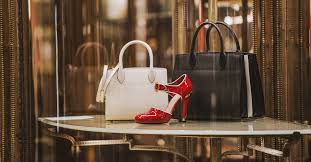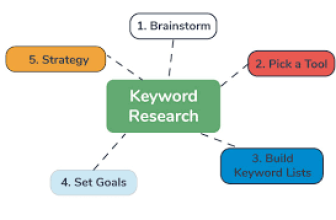
Outline of the Article
Introduction
- Overview of the Indian luxury market.
- Why India is an emerging hub for global luxury brands.
- Comparison with stagnating luxury markets globally.
H1: Understanding India’s Luxury Market Landscape
- H2: Growth Drivers of India’s Luxury Market
- Rise of affluent and high-net-worth individuals.
- Increased urbanization and globalization.
- H2: Shifting Consumer Preferences
- Younger demographics driving luxury consumption.
- Influence of digital platforms and social media.
H1: Major Global Players Tapping into India
- H2: Louis Vuitton’s Success Story in India
- Key strategies for penetration.
- Performance in the Indian market.
- H2: Chanel’s Market Approach
- Exclusive offerings for Indian consumers.
- Brand positioning and consumer engagement.
H1: Challenges in India’s Luxury Market
- H2: Regulatory and Taxation Hurdles
- Import duties and their impact.
- Navigating complex regulations.
- H2: Cultural Nuances
- Adapting to diverse consumer preferences.
- Bridging the gap between traditional and modern luxury.
H1: Emerging Trends in India’s Luxury Market
- H2: Rise of Sustainable Luxury
- Demand for eco-friendly products.
- Examples of brands adopting sustainability in India.
- H2: Role of Technology in Shaping the Market
- AR/VR experiences for luxury retail.
- E-commerce platforms transforming accessibility.
H1: Future Outlook for Luxury Brands in India
- H2: Market Potential in Tier 2 and Tier 3 Cities
- Growth of wealth in smaller cities.
- Strategies for brand expansion beyond metros.
- H2: Collaborations with Indian Artisans
- Fusion of traditional craftsmanship with luxury products.
- Enhancing brand appeal through cultural connections.
Conclusion
- Recap of India’s luxury market potential.
- Call to action for brands to embrace opportunities and challenges.
FAQs
- What makes India an attractive market for luxury brands?
- How are luxury brands adapting to Indian consumer preferences?
- What challenges do luxury brands face in India?
- Are sustainable luxury products gaining traction in India?
- What is the role of technology in the Indian luxury market?
Luxury Market Expansion in India: Unlocking Opportunities for Global Brands
Introduction
India is emerging as a lucrative destination for global luxury brands. With a burgeoning affluent population, a youthful demographic, and evolving consumer preferences, the country offers a fertile ground for expansion. While luxury markets in many parts of the world face stagnation, India’s vibrant economy and growing appetite for premium products make it a beacon of opportunity. Brands like Louis Vuitton and Chanel are leading the charge, capitalizing on this potential to cement their presence in a market poised for exponential growth.
Understanding India’s Luxury Market Landscape
Growth Drivers of India’s Luxury Market
The growth of India’s luxury market is fueled by multiple factors:
Increasing Wealth Among Consumers: India is home to a rapidly expanding base of affluent and high-net-worth individuals (HNWIs). The rising disposable income among these groups has translated into higher spending on premium goods.
Urbanization and Globalization: With urban areas experiencing rapid development, the exposure to international lifestyles and trends has grown significantly. This has created a receptive audience for luxury brands eager to emulate global standards of living.
Shifting Consumer Preferences
Consumer preferences in India are undergoing a transformation, with younger generations taking the lead in luxury consumption. Millennials and Gen Z, with their affinity for digital platforms, have become pivotal in shaping the market. Social media platforms, influencers, and online campaigns play a significant role in influencing purchase decisions.
Moreover, there’s a growing appreciation for personalized experiences and exclusivity, making luxury brands that cater to these demands more appealing.
Major Global Players Tapping into India
Louis Vuitton’s Success Story in India
Louis Vuitton, a titan in the luxury world, has made significant inroads in India. By establishing flagship stores in key cities and tailoring their offerings to Indian sensibilities, the brand has positioned itself as a symbol of aspiration and elegance. Their success is also attributed to strategic partnerships, robust marketing, and a keen understanding of Indian cultural nuances.
Chanel’s Market Approach
Chanel’s strategy in India revolves around exclusivity and customer engagement. The brand has focused on offering curated collections and premium in-store experiences to cater to the discerning tastes of Indian luxury consumers. This approach has helped Chanel foster a loyal customer base and maintain its prestige in a competitive market.
Challenges in India’s Luxury Market
Regulatory and Taxation Hurdles
India’s luxury market is not without its challenges. High import duties on luxury goods can inflate prices, making products less accessible to a broader audience. Additionally, navigating India’s complex regulatory environment requires brands to invest time and resources in compliance.
Cultural Nuances
India’s diverse culture presents both opportunities and challenges. While there’s an increasing demand for luxury products, brands must tread carefully to resonate with traditional values while appealing to modern tastes. Striking this balance is essential for long-term success.
Emerging Trends in India’s Luxury Market
Rise of Sustainable Luxury
Sustainability is no longer a niche concern; it has become a mainstream demand among Indian consumers. Luxury brands that integrate eco-friendly practices and products into their offerings are gaining traction. For example, brands like Stella McCartney have successfully introduced sustainable luxury in India, inspiring others to follow suit.
Role of Technology in Shaping the Market
Technology is revolutionizing the way luxury brands operate in India. From augmented reality (AR) fitting rooms to immersive virtual reality (VR) experiences, technology enhances customer engagement and offers unique shopping experiences. Additionally, e-commerce platforms have made luxury goods more accessible, especially in regions where physical stores are not present.
Future Outlook for Luxury Brands in India
Market Potential in Tier 2 and Tier 3 Cities
While metropolitan cities like Mumbai and Delhi dominate the luxury market, smaller cities are emerging as untapped reservoirs of potential. Rising disposable incomes in Tier 2 and Tier 3 cities present a golden opportunity for brands to expand their reach.
Collaborations with Indian Artisans
Many global luxury brands are leveraging India’s rich heritage by collaborating with local artisans. This fusion of traditional craftsmanship with modern luxury appeals to both Indian and global consumers. It not only enhances the brand’s narrative but also supports local economies.
Conclusion
India’s luxury market is a compelling landscape for global brands seeking growth. With its expanding affluent population, evolving consumer preferences, and untapped regional markets, the opportunities are immense. However, navigating the unique challenges requires a nuanced approach. By embracing innovation, sustainability, and cultural alignment, luxury brands can unlock the full potential of this burgeoning market.
FAQs
What makes India an attractive market for luxury brands?
India’s growing affluent population, urbanization, and evolving consumer preferences make it a prime market for luxury brands.How are luxury brands adapting to Indian consumer preferences?
By offering personalized experiences, exclusive collections, and leveraging digital platforms, luxury brands are aligning with Indian tastes.What challenges do luxury brands face in India?
Regulatory hurdles, high import duties, and cultural diversity are some challenges brands must navigate.Are sustainable luxury products gaining traction in India?
Yes, there’s a growing demand for eco-friendly and ethically produced luxury products in India.What is the role of technology in the Indian luxury market?
Technology enhances accessibility and customer engagement through AR/VR experiences and e-commerce platforms.








